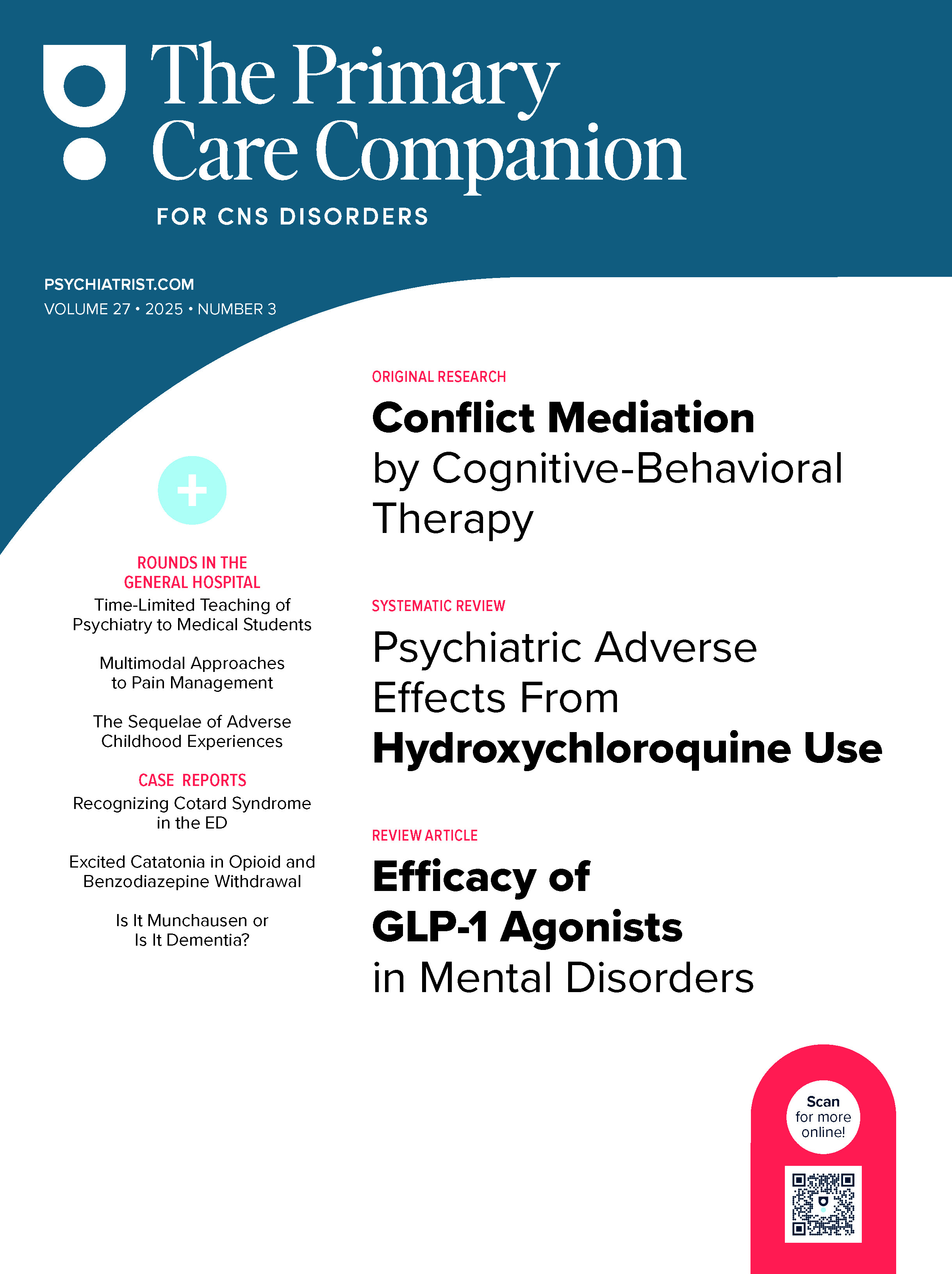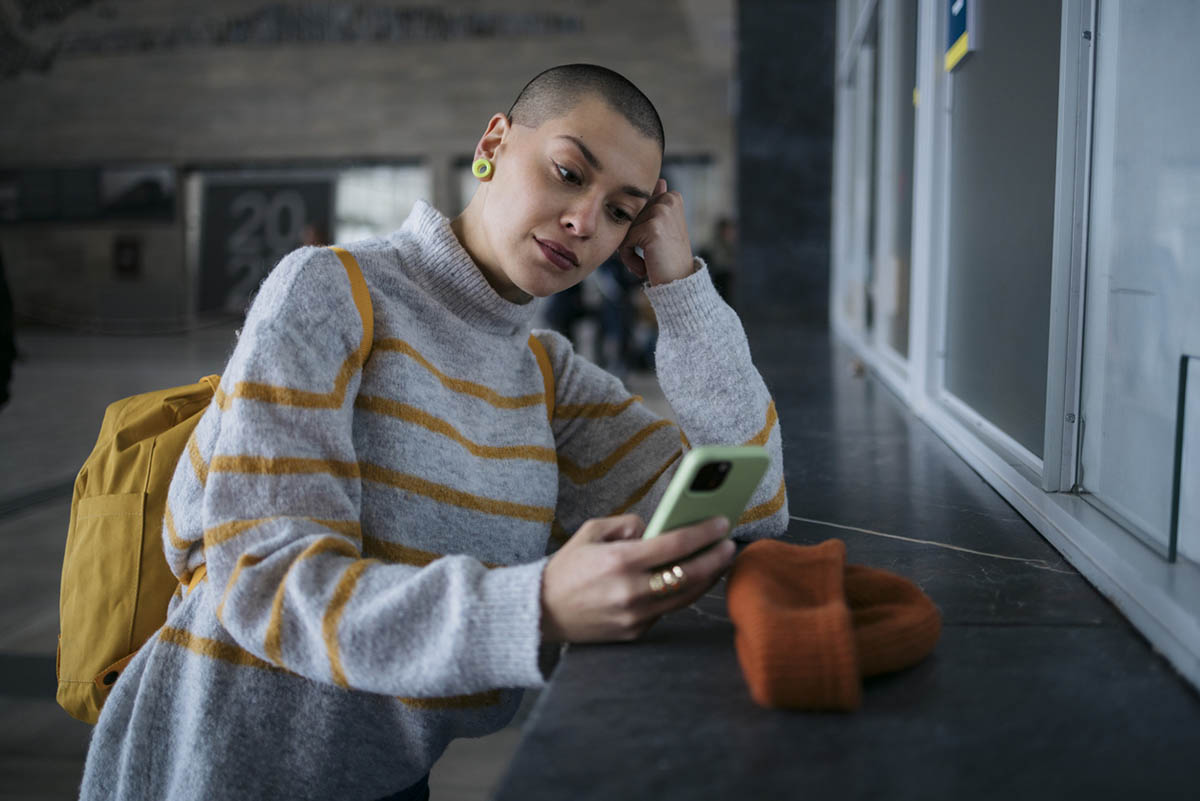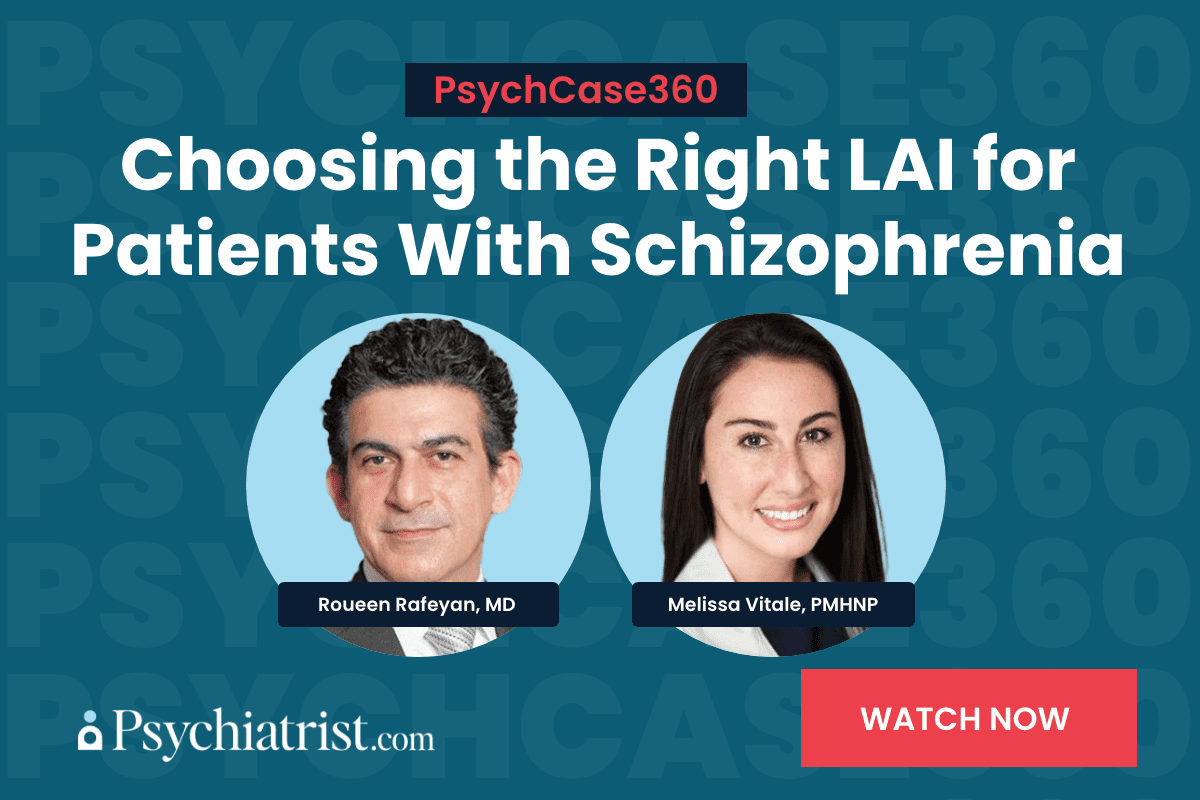Background: Opioid use is a significant national crisis impacting individuals struggling with addiction and their families. The majority of individuals who abuse opioids are of child-rearing age, and critical knowledge gaps remain regarding how this abuse impacts their offspring. Fortunately, treatment for opioid use disorders is available. The primary goal of this study was to evaluate both physical and psychiatric diagnoses of children who have at least 1 parent participating in a buprenorphine-assisted treatment program.
Methods: This retrospective study is based on chart review (January 1, 2010, through June 30, 2018). Children with parents receiving care in a buprenorphine clinic were identified and matched on sex, race, and age in a ratio of 1:5 with controls from the general pediatric clinic population. Data related to health outcomes were extracted from the medical records.
Results: Compared to controls (n = 120), children of parents receiving buprenorphine-assisted treatment (n = 24) were more likely to have been born premature (odds ratio [OR] = 3.3, P = .035), had jaundice after birth (OR = 2.7, P = .034), had enuresis/encopresis (P < .001), and had been the victims of abuse or neglect (OR = 19.7, P = .0005). Children of parents with opioid use disorders were also more likely to utilize emergency services (ie, being seen in the emergency department for fussiness; OR = 4.0, P = .046) and were less likely to be covered by private insurance compared to state-funded insurance (OR = 0.2, P = .0013).
Conclusions: Parental opioid use disorder impacts children. More research is needed to better describe long-term effects of treatment of parental opioid use on their offspring and to help design addiction treatment programs to support whole family units.
Effects of Parental Opioid Use:
Outcomes of Children of Parents in Medication-Assisted Treatment
Compared to Healthy Controls
ABSTRACT
Background: Opioid use is a significant national crisis impacting individuals struggling with addiction and their families. The majority of individuals who abuse opioids are of child-rearing age, and critical knowledge gaps remain regarding how this abuse impacts their offspring. Fortunately, treatment for opioid use disorders is available. The primary goal of this study was to evaluate both physical and psychiatric diagnoses of children who have at least 1 parent participating in a buprenorphine-assisted treatment program.
Methods: This retrospective study is based on chart review (January 1, 2010, through June 30, 2018). Children with parents receiving care in a buprenorphine clinic were identified and matched on sex, race, and age in a ratio of 1:5 with controls from the general pediatric clinic population. Data related to health outcomes were extracted from the medical records.
Results: Compared to controls (n = 120), children of parents receiving buprenorphine-assisted treatment (n = 24) were more likely to have been born premature (odds ratio [OR] = 3.3, P = .035), had jaundice after birth (OR = 2.7, P = .034), had enuresis/encopresis (P < .001), and had been the victims of abuse or neglect (OR = 19.7, P = .0005). Children of parents with opioid use disorders were also more likely to utilize emergency services (ie, being seen in the emergency department for fussiness; OR = 4.0, P = .046) and were less likely to be covered by private insurance compared to state-funded insurance (OR = 0.2, P = .0013).
Conclusions: Parental opioid use disorder impacts children. More research is needed to better describe long-term effects of treatment of parental opioid use on their offspring and to help design addiction treatment programs to support whole family units.
Prim Care Companion CNS Disord 2019;21(4):19m02474
To cite: Betcher HK, Vande Voort JL, Croarkin PE, et al. Effects of parental opioid use: outcomes of children of parents in medication-assisted treatment compared to healthy controls. Prim Care Companion CNS Disord. 2019;21(4):19m02474.
To share: https://doi.org/10.4088/PCC.19m02474
© Copyright 2019 Physicians Postgraduate Press, Inc.
aDepartment of Psychiatry and Psychology, Mayo Clinic, Rochester, Minnesota
*Corresponding author: Hannah K. Betcher, MD, Department of Psychiatry and Psychology, Mayo Clinic, 200 First St SW, Rochester, MN 55905 ([email protected]).
Few studies have examined the effects of parental opioid use disorders on offspring. This lack of research is concerning given that the National Survey on Drug Use and Health1 reported that approximately 12% of children (8.7 million) live in a household with at least 1 parent with a substance use disorder. While it is unclear how many of these parents are addicted to opioids, the most recent report2 estimated that 2 million people in the United States abuse prescription opioids and 591,000 are addicted to heroin. A limited number of studies3–6 have examined prenatal and perinatal influences of parental opioid use on childhood development and medical comorbidities. Other studies7–9 have examined later childhood outcomes and found that children of parents with opioid use disorder may be at an increased risk for attention-deficit/hyperactivity disorder (ADHD), learning difficulties, troubles at school, substance use disorders, and other psychiatric issues. Offspring of parents with opioid addiction also have an increased incidence of childhood abuse, neglect, and negative outcomes in adulthood.10
Fortunately, treatment for opioid use disorders is available. Medications including methadone, buprenorphine, and naltrexone can be an integral part of treatment and sustained sobriety. A number of studies11–21 have evaluated mothers in methadone maintenance programs and included some child outcomes. Fewer studies17,18,22 have looked at mothers receiving buprenorphine replacement therapy. The vast majority of studies3,4,13,15,16,23–25 included only mothers with opioid addiction pursuing treatment and focused on perinatal exposures rather than the effects of being raised by a parent addicted to opioids. A study by Skinner et al20 included mothers and fathers as primary caregivers. The minority of studies23–25 examined the offspring of parents participating in buprenorphine-assisted treatment programs.
Considering the growing opioid epidemic and the probability that the majority of people with addiction are individuals of child-rearing age, there is a critical scientific gap in what we know about the long-term outcomes of children cared for by parents addicted to opioids and children who have parents participating in opioid treatment programs. The primary goal of this retrospective chart review study was to evaluate both physical and psychiatric outcomes of children who have at least 1 parent participating in a medication-assisted treatment program, specifically buprenorphine treatment.
METHODS
This institutional review board–approved study included children under the age of 18 years with a parent who received care in 1 of 2 buprenorphine clinics in southern Minnesota from January 1, 2010, through June 30, 2018. Adults receiving care in the buprenorphine clinics were identified. Twenty-four minor children of these adults were then identified using financial records from health care billing. These children were then matched in a ratio of 1:5 with controls from the general pediatric clinic population within the same health care system.
Matching was based on sex, race (white or nonwhite), and age (within 2 years). Those excluded from the control group included any individuals with reported in utero exposures to substances or individuals for whom parental substance abuse was documented in the child’s chart. We used greedy matching to produce matched samples with balanced covariates and selected a high number of controls to allow an increased chance of finding at least 1 control that matched a case in any given stratum (variables not controlled for).26
Medical records of children identified were reviewed, and data were collected on health outcomes including psychiatric diagnoses, maternal age, prematurity, developmental concerns, respiratory issues, jaundice, voiding concerns, body mass index, abuse reports, accidental injury, involvement of social services, use of emergency services, and use of state-funded insurance.
Statistical Analysis
Data were summarized using medians and interquartile range for continuous variables and counts and percentages for categorical variables. Nonparametric tests (Kruskal-Wallis for continuous variables, Fisher exact test for categorical variables) were used to select variables that showed some evidence of association with history of participation in the buprenorphine clinic. This set was further subset to those with sufficient information to make estimation of the odds possible. Odds ratios (ORs) were then calculated for this set of variables by logistic regression. As this work is intended to be hypothesis generating in nature, a liberal P value threshold is appropriate, and no multiple testing correction was implemented.27,28
RESULTS
We identified 24 children who met the criteria for inclusion in the study. These individuals were compared to 120 controls from the general pediatric population. See Table 1 for a demographic description of the 2 groups. In both groups, the median age was 6.0 years and 37.5% were girls and 66.7% were white, demonstrating good matching. Seven (29%) of the children with parents in the buprenorphine clinic had documented prenatal exposures to some form of substance (alcohol, opioids, benzodiazepines, or illicit substances); 5 of the cases documented exclusive exposure to opioids prenatally without exposure to other illicit substances. Of the 7 cases with prenatal exposure to illicit substances, only 1 was born prematurely.

When compared to the control group from the general population, the children who had a parent in the buprenorphine clinic experienced more voiding issues (enuresis/encopresis): 5 individuals in the buprenorphine group compared to 0 individuals in the control group (P < .001). We also found that individuals with a parent in the buprenorphine clinic were more apt to have been born to younger mothers, with a median age of 24 years compared to 29 years in the control group (P = .015).
As demonstrated in Table 2, the children with a parent in the buprenorphine clinic were also more likely to have had jaundice after birth, been born prematurely before 37 weeks of gestation, been brought to the emergency department (ED) for fussiness, and had a suspected child abuse report in their medical record. Children with a parent in the buprenorphine clinic were less likely to have private insurance, which is a surrogate measure of socioeconomic status.

ADHD, oppositional defiant disorder (ODD), and behavior concerns showed a trend toward being more common in the children with a parent in the buprenorphine clinic. Four children (16.7%) who had a parent in the buprenorphine group had a diagnosis of ADHD or ODD compared to 5% of the general pediatric population, but this did not reach significance (OR = 3.8, P = .053).
No significant differences were found between the groups in terms of respiratory concerns in infancy, asthma, feeding or growth concerns in infancy, developmental delays, overweight or underweight status, or accidental trauma.
DISCUSSION
To our knowledge, this study is 1 of very few that has examined the impact of parental substance use treatment on children outside of the perinatal period and included both fathers and mothers. Our study investigated a cohort of youth who have a parent with an opioid use disorder receiving care in a buprenorphine-assisted treatment program and compared them to a matched control group of youth. Results indicate that offspring of parents with an opioid use disorder were more apt to experience a number of medical issues such as enuresis, encopresis, jaundice after birth, and premature birth. Parents in medication-assisted treatment tended to bring their children more frequently to the ED for fussiness, and the children were significantly more likely to have had a suspected abuse report filed on their behalf. Children with a parent in the buprenorphine clinic were less likely to have private, nongovernment insurance, which was used as a surrogate measure for socioeconomic status. The long-term consequences of parental opioid use and related stressors on their children’s medical and psychiatric issues are largely unknown, which is why additional studies in this regard are needed.
This study contributes in a number of ways to the growing body of knowledge about the impact of opioids on children of parents in buprenorphine clinics. First, we enrolled both mothers and fathers who participated in a buprenorphine treatment program; unfortunately, due to a small number of participants, we were unable to analyze the data for each group separately. Only a few studies29 have included both parents, and the sex of the parent involved seems to have an impact on the child. A study by Stanger et al29 included both parents and reported that mothers with opioid or cocaine use disorders were found to influence their children’s difficulties indirectly by struggling with the entire family as a unit; when fathers struggled with drug use, family difficulties associated with fathers were found to be independent of children’s difficulties. Second, most studies are cross-sectional or assess the impact of parental opioid use disorder on children within a relatively short period of time. Here, we were able to capture a wider age range, looking at individuals 6 months through 16 years of age.
Previous studies6,30 showed that infants exposed to opioids in utero are at increased risk of prematurity and jaundice. While the minority of cases had confirmed in utero exposure to opioids, our study also found higher rates of prematurity and jaundice in youth from parents in the buprenorphine group compared to the control group. We also noted a potential trend toward behavioral concerns such as ODD and ADHD, which has also been described in prior studies.7,9
New findings include that enuresis and encopresis were found at significantly higher rates in the children with a parent in medication-assisted treatment compared to those in the control group. Additionally, children who had a parent in the buprenorphine clinic were nearly 20 times more likely to have suffered abuse or neglect compared to the general pediatric population. This finding is of grave concern, as trauma can have a lasting impact on a child’s developmental trajectory and life experience.31
Given the impact on the children’s health, it is notable that parental substance abuse outside of the perinatal period was rarely mentioned in the child’s medical record. In most cases, it appeared that the primary care doctors caring for these children were unaware of parental substance abuse or involvement in medication-assisted treatment. We suspect this finding is related to several issues. Outside of the perinatal period, our data suggest that children have fewer direct signs of parental substance abuse, and the signs are less specific. Rather than demonstrating withdrawal symptoms or having positive meconium, these children showed voiding issues and were being seen emergently for potentially less severe concerns (ie, seen in the ED for fussiness). Additionally, after pregnancy and early infancy, it becomes less routine for pediatric providers to ask parents about their health.
As opioid use disorder is present across all socioeconomic groups, perhaps it would be important to make it standard practice for medical providers to inquire nonjudgmentally if parents are exposed to opioids, whether through prescriptions (chronic pain or addiction programs) or nonprescriptions.32,33 In a study by Sharpe and Kuschel,34 it was shown that the reason why mothers are taking opioids may have a significant influence on whether infants develop neonatal opioid withdrawal syndrome (NOWS) after birth, regardless of dose. In that study,34 11% of infants of mothers taking methadone due to chronic pain developed NOWS versus 58% of infants of mothers using methadone illegally. By having a better understanding of parental opioid use and documenting the use in the child’s medical record, health care providers may be able to communicate with one another and more readily recognize signs and symptoms in children that put them at risk in their developmental trajectory. However, it is also important to consider how documentation of parental substance use or substance use treatment may introduce potential bias in health care providers’ interactions with the child and his or her family.
Limitations
The information gathered was based on chart review, which has the inherent problem of potential underreporting in the medical record and the inability to confirm diagnoses or outcomes. First and foremost, we were limited only to information that was contained in patients’ charts. For instance, we were unable to confirm whether our subjects had in utero exposure to opioids and relied on birth records, which may not be complete. Although the age range can be considered a strength, it also is a limitation given the small number of individuals, especially in the older ages. Additionally, a larger N would have allowed us to better control for other potential confounders such as other parental psychiatric diagnoses, which may contribute genetically and environmentally to childhood outcomes. While we were able to detect some important differences between the buprenorphine and control groups, a larger sample size would likely have helped us further differentiate between the groups. Pairing parent-child dyads for research purposes is challenging, and although we were able to do this through financial records, it is possible that we are missing some of the children with potentially worse outcomes. For instance, parents who have had parental rights terminated would not be providing financially for their children and, therefore, would not have been linked in this study, potentially limiting the generalizability of our results. While we included both mothers and fathers in our study due to a small N, we were unable to look at results separately for just the group of fathers.
This study was retrospective. We had no way to evaluate when certain outcomes occurred (ie, abuse reports, ED visits for fussiness) in relation to when a parent was in or not in treatment. It would be helpful to follow these families longitudinally so that we could better describe and understand the relationship between discrete childhood outcomes and a parent’s engagement in treatment. We were also unable to reliably obtain data on how long the parents were sober and link that information to the children’s outcomes. There is a significant gap in the literature on connections between parental length of abstinence from opioid medication and child behavioral and developmental outcomes that we plan to investigate further.
CONCLUSION
With the growing opioid epidemic and the likelihood that the majority of these individuals are of child-rearing age, studies examining both the perinatal and infancy effects of parental substance use and involvement in treatment as well as longer-term childhood and adolescent effects are warranted. Children of parents receiving care through medication-assisted treatment with buprenorphine were more likely to have been born prematurely, to have had jaundice after birth, and to have been the victims of abuse or neglect. They were also more likely to utilize emergency services (seen in the ED for fussiness) and to be covered by government-funded insurance compared to private insurance. Given the relatively young age of our cohort, we are unable to comment on later adolescent psychiatric diagnoses or other health outcomes. Nonetheless, these results suggest further research is needed to better understand the outcomes of children whose parents are addicted to opioids and those who have parents involved in treatment to identify ways to best support this population.
Submitted: April 29, 2019; accepted June 4, 2019.
Published online: August 15, 2019.
Potential conflicts of interest: None.
Funding/support: None.
REFERENCES
1. Lipari RN, Van Horn SL. Children living with parents who have a substance use disorder. In: The CBHSQ Report. National Survey on Drug Use and Health. Rockville, MD: Substance Abuse and Mental Health Services Administration; August 24, 2017.
2. Key Substance Use and Mental Health Indicators in the United States: Results From the 2015 National Survey on Drug Use and Health. HHS Publication No. SMA 16-4984, NSDUH Series H-51. US Department of Health & Human Services, Substance Abuse and Mental Health Services Administration. SAMHSA website. https://www.samhsa.gov/data/sites/default/files/NSDUH-FFR1-2015/NSDUH-FFR1-2015/NSDUH-FFR1-2015.htm. Accessed July 17, 2019.
3. Anand KJS, Campbell-Yeo M. Consequences of prenatal opioid use for newborns. Acta Paediatr. 2015;104(11):1066–1069. PubMed CrossRef
4. Johnson HL, Rosen TS. Prenatal methadone exposure: effects on behavior in early infancy. Pediatr Pharmacol (New York). 1982;2(2):113–120. PubMed
5. Lind JN, Interrante JD, Ailes EC, et al. Maternal use of opioids during pregnancy and congenital malformations: a systematic review. Pediatrics. 2017;139(6):e20164131. PubMed CrossRef
6. Patrick SW, Dudley J, Martin PR, et al. Prescription opioid epidemic and infant outcomes. Pediatrics. 2015;135(5):842–850. PubMed CrossRef
7. Davis DD, Templer DI. Neurobehavioral functioning in children exposed to narcotics in utero. Addict Behav. 1988;13(3):275–283. PubMed CrossRef
8. Lester BM, Lagasse LL. Children of addicted women. J Addict Dis. 2010;29(2):259–276. PubMed CrossRef
9. Ornoy A, Segal J, Bar-Hamburger R, et al. Developmental outcome of school-age children born to mothers with heroin dependency: importance of environmental factors. Dev Med Child Neurol. 2001;43(10):668–675. PubMed CrossRef
10. Felitti VJ, Anda RF, Nordenberg D, et al. Relationship of childhood abuse and household dysfunction to many of the leading causes of death in adults: the Adverse Childhood Experiences (ACE) Study. Am J Prev Med. 1998;14(4):245–258. PubMed CrossRef
11. Bauman PS, Dougherty FE. Drug-addicted mothers’ parenting and their children’s development. Int J Addict. 1983;18(3):291–302. PubMed CrossRef
12. Borelli JL, Luthar SS, Suchman NE. Discrepancies in perceptions of maternal aggression: implications for children of methadone-maintained mothers. Am J Orthopsychiatry. 2010;80(3):412–421. PubMed CrossRef
13. Goodman G, Hans SL, Cox SM. Attachment behavior and its antecedents in offspring born to methadone-maintained women. J Clin Child Psychol. 1999;28(1):58–69. PubMed CrossRef
14. Goodman G, Hans SL, Bernstein VJ. Mother expectation of bother and infant attachment behaviors as predictors of mother and child communication at 24 months in children of methadone-maintained women. Infant Ment Health J. 2005;26(6):549–569. PubMed CrossRef
15. Jeremy RJ, Bernstein VJ. Dyads at risk: methadone-maintained women and their four-month-old infants. Child Dev. 1984;55(4):1141–1154. PubMed CrossRef
16. Maguire DJ, Taylor S, Armstrong K, et al. Characteristics of maternal-infant interaction during treatment for opioid withdrawal. Neonatal Netw. 2016;35(5):297–304. PubMed CrossRef
17. Sarfi M, Smith L, Waal H, et al. Risks and realities: dyadic interaction between 6-month-old infants and their mothers in opioid maintenance treatment. Infant Behav Dev. 2011;34(4):578–589. PubMed CrossRef
18. Sarfi M, Sundet JM, Waal H. Maternal stress and behavioral adaptation in methadone- or buprenorphine-exposed toddlers. Infant Behav Dev. 2013;36(4):707–716. PubMed CrossRef
19. Schneider JW, Hans SL. Effects of prenatal exposure to opioids on focused attention in toddlers during free play. J Dev Behav Pediatr. 1996;17(4):240–247. PubMed CrossRef
20. Skinner ML, Haggerty KP, Fleming CB, et al. Predicting functional resilience among young-adult children of opiate-dependent parents. J Adolesc Health. 2009;44(3):283–290. PubMed CrossRef
21. Suchman NE, Luthar SS. Maternal addiction, child maladjustment and socio-demographic risks: implications for parenting behaviors. Addiction. 2000;95(9):1417–1428. PubMed CrossRef
22. Salo S, Politi J, Tupola S, et al. Early development of opioid-exposed infants born to mothers in buprenorphine-replacement therapy. J Reprod Infant Psychol. 2010;28(2):161–179. CrossRef
23. Brogly SB, Saia KA, Walley AY, et al. Prenatal buprenorphine versus methadone exposure and neonatal outcomes: systematic review and meta-analysis. Am J Epidemiol. 2014;180(7):673–686. PubMed CrossRef
24. Bier JB, Finger AS, Bier BA, et al. Growth and developmental outcome of infants with in-utero exposure to methadone vs buprenorphine. J Perinatol. 2015;35(8):656–659. PubMed CrossRef
25. Kaltenbach K, O’Grady KE, Heil SH, et al. Prenatal exposure to methadone or buprenorphine: early childhood developmental outcomes. Drug Alcohol Depend. 2018;185:40–49. PubMed CrossRef
26. Bergstralh EJ, Kosanke JL. Computerized Matching of Cases to Controls. Mayo Foundation website. https://www.mayo.edu/research/documents/biostat-56pdf/doc-10026923. April 1995. Accessed July 19, 2019.
27. Rothman KJ. No adjustments are needed for multiple comparisons. Epidemiology. 1990;1(1):43–46. PubMed CrossRef
28. Feise RJ. Do multiple outcome measures require p-value adjustment? BMC Med Res Methodol. 2002;2(1):8. PubMed CrossRef
29. Stanger C, Kamon J, Dumenci L, et al. Predictors of internalizing and externalizing problems among children of cocaine and opiate dependent parents. Drug Alcohol Depend. 2002;66(2):199–212. PubMed CrossRef
30. Nørgaard M, Nielsson MS, Heide-Jørgensen U. Birth and neonatal outcomes following opioid use in pregnancy: a Danish population-based study. Subst Abuse. 2015;9(suppl 2):5–11. PubMed
31. Dye H. The impact and long-term effects of childhood trauma. J Hum Behav Soc Environ. 2018;28(3):381–392. CrossRef
32. Meschke LL, McNeely C, Brown KC, et al. Reproductive health knowledge, attitudes, and behaviors among women enrolled in medication-assisted treatment for opioid use disorder. J Womens Health (Larchmt). 2018;27(10):1215–1224. PubMed CrossRef
33. Davie-Gray A, Moor S, Spencer C, et al. Psychosocial characteristics and poly-drug use of pregnant women enrolled in methadone maintenance treatment. Neurotoxicol Teratol. 2013;38:46–52. PubMed CrossRef
34. Sharpe C, Kuschel C. Outcomes of infants born to mothers receiving methadone for pain management in pregnancy. Arch Dis Child Fetal Neonatal Ed. 2004;89(1):F33–F36. PubMed CrossRef
Please sign in or purchase this PDF for $40.00.




